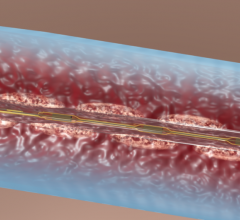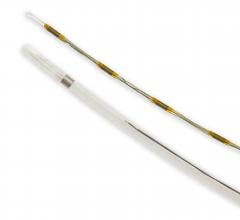
January 7, 2010 – Doctors with Virginia Interventional and Vascular Associates (VIVA) report success in treating acute deep vein thrombosis (DVT) with a procedure called isolated pharmacomechanical thrombolysis (IPMT). The treatment has been used for the past two years to destroy clots much faster than traditional therapies.
VIVA performs the two-hour, minimally invasive procedure with the FDA-cleared Trellis Peripheral Infusion System. Using images to help guide Trellis to the right spot, VIVA's interventional radiologists isolate the clot with balloons positioned at each end of the catheter, infuse the clot with fibrinolytic medication, break it up with a tiny rotating wire, and aspirate the remaining particles.
John D. Statler, M.D., an interventional radiologist with VIVA, says the procedure offers several advantages over traditional therapies such as anti-coagulant medication. This prevents the clot from growing and protects the lungs, but does not dissolve the clot, relying on the body to break it down over time. Catheter-directed thrombolysis, which dissolves clots by delivering thrombolytic medication through catheters, requires a 24- to 72-hour intensive care hospital stay.
"We can destroy the clot and relieve pain for most patients within a couple of hours after starting the procedure," Dr. Statler said. "It requires an overnight hospital stay, rather than intensive care for several days, and the risk of bleeding is lower than for catheter-directed thrombolysis."
Dr. Statler said the safety and effectiveness of IPMT was documented in several clinical studies. The American College of Chest Physicians has endorsed the procedure for select patients with extensive acute proximal DVT.
While DVT is not fatal by itself, a blood clot that travels to the pulmonary arteries, a pulmonary embolism, can be deadly, according to the Office of the Surgeon General (OSG). Together, DVT and pulmonary embolism contribute to at least 100,000 deaths each year. The OSG, along with the National Quality Forum and The Joint Commission, has called for more aggressive treatment of DVT.
VIVA is the interventional radiology and vascular surgery division of Radiologic Associates of Fredericksburg, Va.
For more information: www.imagingway.com/dvt, www.vivassociates.com


 November 21, 2022
November 21, 2022 




